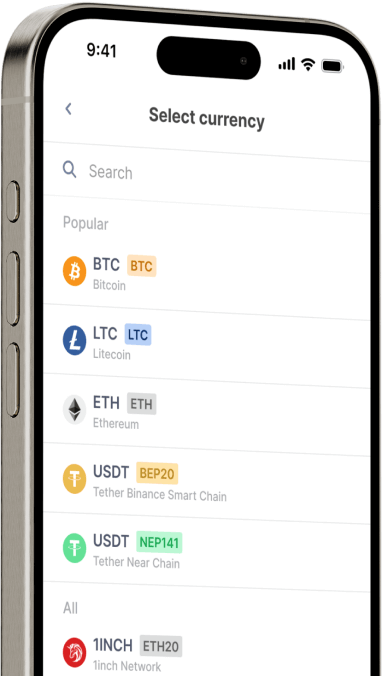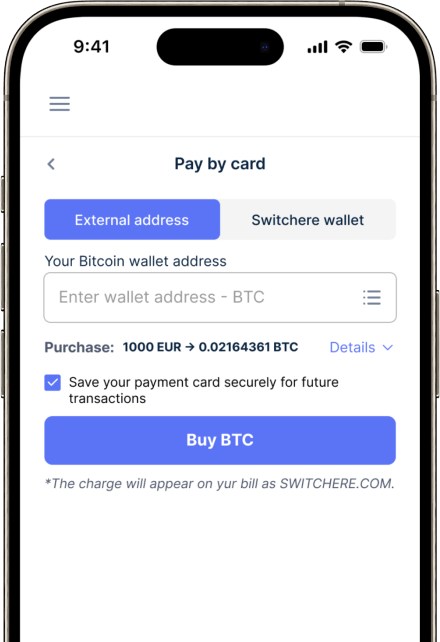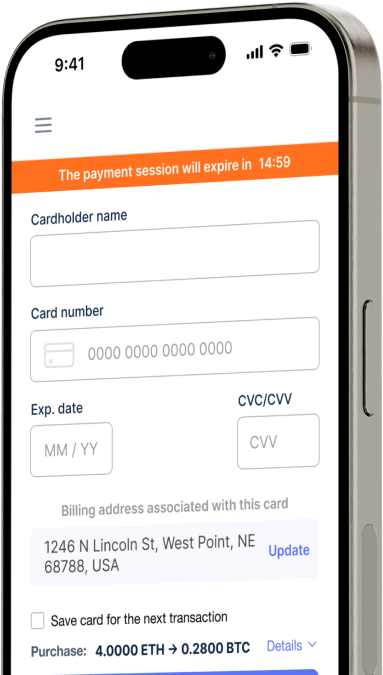Konvertieren
Turkish lira (TRY) zu Cartesi (CTSI) Sofort
Kaufen Sie Cartesi (CTSI) mit Turkish lira (TRY) einfach bei Switchere und profitieren Sie von schnellen und sicheren Transaktionen.
Über
Cartesi (CTSI)
Cartesi (CTSI) ist eine Layer-2-Infrastrukturplattform, die entwickelt wurde, um das kritische Problem der rechnerischen Skalierbarkeit und der hohen Kosten in Blockchain-Netzwerken zu lösen. Oft als „Das Blockchain-Betriebssystem“ bezeichnet, ist ihr Hauptziel, dezentrale Anwendungen (dApps) mit einer Komplexität zu ermöglichen, die mit ihren zentralisierten Web2-Pendants konkurrieren kann. Cartesi erreicht dies, indem es Entwicklern ermöglicht, Smart Contracts und dApps in einer vollständigen Linux-Betriebssystemumgebung zu erstellen und dabei gängige Programmiersprachen und Software-Stacks zu verwenden. Dieser Ansatz senkt die Eintrittsbarriere für Entwickler, die von Web2 zu Web3 wechseln, erheblich und fördert ein reichhaltigeres und leistungsfähigeres dApp-Ökosystem, das auf robuster Blockchain-Technologie aufbaut.
Das Herzstück der Plattform ist die Cartesi Machine (CM), eine deterministische virtuelle Maschine, die intensive Berechnungen off-chain ausführt. Durch die Nutzung von Optimistic Rollups kann Cartesi diese komplexen Berechnungen extern verarbeiten und die Ergebnisse mit kryptografischer Sicherheit auf der zugrunde liegenden Layer-1-Blockchain wie Ethereum verankern. Dieses hybride Modell bietet die immense Rechenleistung der Off-Chain-Verarbeitung mit dem nachweisbaren Vertrauen eines On-Chain-Digital-Ledgers. Der native Utility-Token, CTSI, ist integraler Bestandteil der Tokenomics des Netzwerks. Er wird für das Staking innerhalb von Cartesis Noether Proof-of-Stake (PoS) Sidechain verwendet, wo Node-Betreiber helfen, das Netzwerk zu sichern und Belohnungen zu verdienen. CTSI fungiert auch als Zahlungsmittel für Berechnungs- und Datenverfügbarkeitsdienste innerhalb des Ökosystems.
Andere 150+ Kryptowährungen für Turkish lira (TRY) kaufen
Andere Münzen für Turkish lira (TRY)
-
TRY zu ZRX
-
TRY zu 1INCH
-
TRY zu AAVE
-
TRY zu ACH
-
TRY zu ALGO
-
TRY zu TLM
-
TRY zu ANKR
-
TRY zu APE
-
TRY zu NFT
-
TRY zu API3
-
TRY zu APT
-
TRY zu ARPA
-
TRY zu AUDIO
-
TRY zu AVAX
-
TRY zu AVAX
-
TRY zu AXS
-
TRY zu BADGER
-
TRY zu BAL
-
TRY zu BNT
-
TRY zu BAT
-
TRY zu BNB
-
TRY zu BSW
-
TRY zu BSV
-
TRY zu BLUR
-
TRY zu BONE
-
TRY zu CTSI
-
TRY zu CELR
-
TRY zu CELO
-
TRY zu CEL
-
TRY zu LINK
-
TRY zu CHZ
-
TRY zu CHR
-
TRY zu C98
-
TRY zu COMP
-
TRY zu CFX
-
TRY zu PEOPLE
-
TRY zu CVX
-
TRY zu ATOM
-
TRY zu CTC
-
TRY zu CRV
-
TRY zu DAI
-
TRY zu DASH
-
TRY zu MANA
-
TRY zu DENT
-
TRY zu DGB
-
TRY zu DYDX
-
TRY zu XEC
-
TRY zu EOS
-
TRY zu ETC
-
TRY zu ENS
-
TRY zu ETHW
-
TRY zu FET
-
TRY zu FIL
-
TRY zu FLOKI
-
TRY zu GALA
-
TRY zu GNO
-
TRY zu ONE
-
TRY zu HBAR
-
TRY zu HOT
-
TRY zu HOOK
-
TRY zu ICX
-
TRY zu ILV
-
TRY zu IMX
-
TRY zu INJ
-
TRY zu ICP
-
TRY zu IOST
-
TRY zu IOTX
-
TRY zu JASMY
-
TRY zu JST
-
TRY zu KAVA
-
TRY zu KCS
-
TRY zu KSM
-
TRY zu KNC
-
TRY zu LDO
-
TRY zu LQTY
-
TRY zu LPT
-
TRY zu LOOKS
-
TRY zu LRC
-
TRY zu LUNA
-
TRY zu MKR
-
TRY zu MASK
-
TRY zu EGLD
-
TRY zu ALICE
-
TRY zu NEAR
-
TRY zu XEM
-
TRY zu NEXO
-
TRY zu NOT
-
TRY zu NMR
-
TRY zu OKB
-
TRY zu OMG
-
TRY zu ONT
-
TRY zu EDU
-
TRY zu OP
-
TRY zu OGN
-
TRY zu CAKE
-
TRY zu PAXG
-
TRY zu PENDLE
-
TRY zu DOT
-
TRY zu POL
-
TRY zu QTUM
-
TRY zu QNT
-
TRY zu RDNT
-
TRY zu XRD
-
TRY zu RVN
-
TRY zu REN
-
TRY zu RSR
-
TRY zu RLC
-
TRY zu RPL
-
TRY zu SFP
-
TRY zu SHIB
-
TRY zu SKL
-
TRY zu SXP
-
TRY zu STND
-
TRY zu STG
-
TRY zu XLM
-
TRY zu GMT
-
TRY zu STORJ
-
TRY zu STMX
-
TRY zu SUSHI
-
TRY zu SNX
-
TRY zu USDT (Polygon)
-
TRY zu USDT (AVAC)
-
TRY zu USDT (BEP20)
-
TRY zu USDT (ERC20)
-
TRY zu USDT (SPL)
-
TRY zu USDT (NEP141)
-
TRY zu USDT (FA2)
-
TRY zu USDT (TRC20)
-
TRY zu USDT (JETTON)
-
TRY zu XTZ
-
TRY zu GRT
-
TRY zu SAND
-
TRY zu TFUEL
-
TRY zu THETA
-
TRY zu RUNE
-
TRY zu TON
-
TRY zu TUSD (BEP20)
-
TRY zu TUSD (TRC20)
-
TRY zu TWT
-
TRY zu UOS
-
TRY zu UMA
-
TRY zu UNI
-
TRY zu USDC (Polygon)
-
TRY zu USDC (SPL)
-
TRY zu USDC (OP)
-
TRY zu USDC (BEP20)
-
TRY zu USDC (AVAC)
-
TRY zu USDC (ARB)
-
TRY zu USDC (ERC20)
-
TRY zu VET
-
TRY zu VRA
-
TRY zu WAXP
-
TRY zu WOO
-
TRY zu WLD
-
TRY zu WBTC
-
TRY zu WMINIMA
-
TRY zu XDC
-
TRY zu YFI
-
TRY zu YGG
-
TRY zu ZIL
Wie man Cartesi (CTSI) kauft
Häufig gestellte Fragen
-
Was ist die primäre Methode, um Cartesi (CTSI) mit Türkischen Lira (TRY) zu kaufen?
Der gängigste Weg, CTSI mit TRY zu kaufen, ist über eine zentralisierte Kryptowährungsbörse, die ein direktes TRY/CTSI-Handelspaar anbietet. Dieser Prozess erfordert in der Regel den Abschluss einer KYC/AML-Verifizierung gemäß den türkischen MASAK-Vorschriften. Nach der Verifizierung können Sie TRY über lokale Zahlungsmethoden wie EFT oder Banküberweisung einzahlen. Diese Fiat-On-Ramp ermöglicht es Ihnen, eine Order im Orderbuch der Börse zu platzieren, um das digitale Asset CTSI zu kaufen und es in Ihrer Börsen-Wallet zu speichern.
-
Was sind die typischen Transaktionsgebühren beim Kauf von CTSI mit Türkischer Lira?
Bei der Umrechnung von TRY in CTSI erwartet Sie eine mehrschichtige Gebührenstruktur. Erstens kann die Einzahlung von TRY auf eine Börse eine kleine Gebühr von Ihrer Bank nach sich ziehen. Zweitens wird die Börse eine Handelsgebühr (oft ein Prozentsatz des Handelswerts, bekannt als Maker/Taker-Gebühren) erheben, wenn Ihr Kaufauftrag für CTSI ausgeführt wird. Schließlich, wenn Sie sich entscheiden, Ihre CTSI zur Beteiligung am Staking über Noether PoS in eine persönliche digitale Wallet zu verschieben, zahlen Sie eine von der Börse festgelegte Netzwerk-Auszahlungsgebühr, die die Kosten der Blockchain-Transaktion deckt.
-
Was unterscheidet die Layer-2-Lösung von Cartesi von anderen Blockchain-Technologien?
Das Hauptunterscheidungsmerkmal von Cartesi ist die Verwendung einer Linux-Virtuellen-Maschine, bekannt als die Cartesi Machine. Während sich andere Layer-2-Lösungen auf die Skalierung von Transaktionen konzentrieren, fokussiert sich Cartesi auf die Skalierung von Berechnungen. Dies ermöglicht Entwicklern, dApps mit vertrauten, gängigen Programmiersprachen und Software-Stacks zu erstellen, anstatt auf blockchain-native Sprachen wie Solidity beschränkt zu sein. Es ermöglicht weitaus komplexere und intensivere Off-Chain-Berechnungen, deren Ergebnisse mithilfe von Optimistic Rollups verifizierbar auf der Chain gesichert werden.
-
Warum ist ein TRY-zu-CTSI-Gateway für Entwickler, die die Technologie von Cartesi nutzen, wichtig?
Ein direktes TRY-zu-CTSI-Fiat-Gateway ist entscheidend, da es türkischen Entwicklern einen nahtlosen Zugang zum Cartesi-Ökosystem ermöglicht. Sie können problemlos den CTSI-Utility-Token erwerben, der zur Bezahlung von Berechnungen innerhalb der Cartesi Machine benötigt wird. Dies ist von Bedeutung, da Cartesi einzigartig die dApp-Entwicklung mit gängigen Linux-basierten Software-Stacks ermöglicht, was komplexe Off-Chain-Berechnungen erlaubt, die dann On-Chain verifiziert werden. Dies vereinfacht die Erstellung hochskalierbarer und rechenintensiver dezentraler Anwendungen.
-
Kann ich CTSI-Token, die ich direkt mit Türkischer Lira gekauft habe, staken?
Absolut. Nachdem Sie CTSI an einer Börse mit Ihrer TRY-Einzahlung gekauft haben, besitzen Sie das digitale Asset. Um an der Sicherung des Netzwerks teilzunehmen, müssen Sie die CTSI von der Börse in eine selbstverwaltete digitale Wallet abheben, die den Token unterstützt. Von Ihrer Wallet aus können Sie dann Ihre CTSI an einen Staking-Pool innerhalb des Noether Proof-of-Stake (PoS)-Systems von Cartesi delegieren, um Belohnungen für Ihren Beitrag zur Datenverfügbarkeitsschicht des Netzwerks zu verdienen.
-
Was sind die wesentlichen Sicherheitsschritte beim Handel von TRY gegen CTSI an einer Börse?
Für den sicheren Handel von TRY gegen CTSI sollten Sie immer die Zwei-Faktor-Authentifizierung (2FA) in Ihrem Börsenkonto aktivieren. Verwenden Sie ein starkes, einzigartiges Passwort und seien Sie vorsichtig bei Phishing-Betrug per E-Mail oder Social Media. Nutzen Sie nur seriöse Börsen, die den lokalen Finanzvorschriften wie MASAK entsprechen. Zur langfristigen Aufbewahrung empfiehlt es sich, Ihre CTSI von der Börse in eine nicht-verwahrende Hardware-Wallet abzuheben, was Ihnen die volle Kontrolle über Ihre privaten Schlüssel und digitalen Vermögenswerte gibt.




